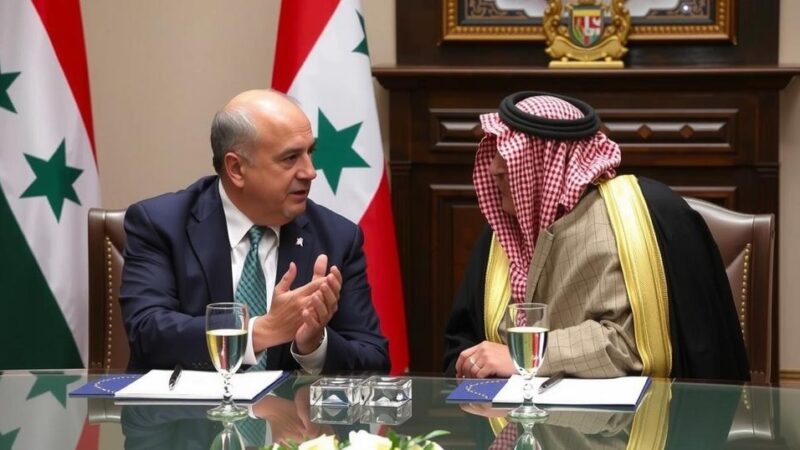Israel has commenced a land invasion of Lebanon following extensive bombings, aiming to reassert control and reduce Hezbollah’s influence. The historical context reveals a pattern of previous Israeli invasions, notably in 1982 and 2006, that have not resulted in definitive success. With significant military backing from the United States, Netanyahu is pursuing aggressive tactics, yet the effectiveness of this campaign remains uncertain given Hezbollah’s robust capabilities and the complexities of regional politics.
Israel has launched an extensive ground invasion of Lebanon, following significant air bombardments aimed at pushing Hezbollah back from the Israeli border. The intention is to securely resettle approximately 60,000 displaced individuals from northern Israel while simultaneously executing strategic military objectives, including the assassination of Hezbollah leader Hassan Nasrallah and various commanders, aimed at diminishing the group’s operational capabilities. This invasion seems to mimic Israel’s strategies employed during its conflicts in Gaza, yet the history of Israel’s military interventions in Lebanon casts doubt on the effectiveness of the current campaign. Historically, Israel has engaged in multiple invasions of Lebanon, notably in 1982, where its objectives revolved around eradicating the Palestine Liberation Organization and managing the Palestinian resistance resultant from Israel’s control over territories since the 1967 war. These military efforts led to Hezbollah’s emergence in this period, bolstered by Iranian support. The dynamics of the conflict saw an initial Israeli strategy to secure an advantage. However, the rise of Hezbollah as a political and military force culminated in Israel’s unilateral withdrawal in 2000, which inadvertently strengthened Hezbollah’s position. The 2006 conflict saw Israel’s attempt to dismantle Hezbollah’s capabilities, which concluded unsuccessfully after intensive engagements. Despite high expenditures in terms of both human lives and resources, a ceasefire was established with Hezbollah portraying itself as the victor. In contrast, current Israeli Prime Minister Benjamin Netanyahu exhibits enhanced confidence in decisively confronting Hezbollah, underpinned by both domestic political backing and considerable military resources, coupled with significant support from the United States, including a recent aid package exceeding $8 billion. Despite Netanyahu’s escalated stance and the deployment of greater firepower against perceived threats in the region, it remains unclear whether the contemporary approach will lead to a different outcome. Israel’s strategic framework is complicated by its nuclear capability, which serves as a deterrent in regional dynamics. Netanyahu perceives the annihilation of Hezbollah as crucial to dismantling Iran’s influence in Lebanon, facilitated by Israeli perceptions of Iranian interests. However, Iran’s new leadership under President Masoud Pezeshkian seems committed to balancing domestic reforms alongside sustaining Hezbollah while pursuing diplomatic avenues to ameliorate international relations and mitigate sanctions. As the situation unfolds, it bears recalling that unlike Hamas, Hezbollah possesses substantial resources and combat readiness; its capacity to sustain prolonged resistance against Israeli occupation poses serious implications for Israel’s northern populace. This raises critical questions about the potential human and material costs borne by Israel should it enmesh itself in another protracted conflict. Furthermore, historical precedents illustrate the recurrent failure of military might in the face of deeply entrenched geopolitical issues. The overarching narrative reflects a juxtaposition of military intention against the stark reality of Middle Eastern conflicts, wherein brute force has seldom replaced the efficacy of diplomatic engagement in addressing long-standing regional challenges.
The article discusses the complex history of Israeli military engagements in Lebanon, focusing on recent developments concerning Israel’s invasion of the northern neighbor amid extensive bombardments. It contrasts current operations with past conflicts, particularly the 1982 and 2006 invasions, which were aimed at eliminating Hezbollah and the Palestinian resistance. The article contextualizes Israel’s military strategies against the backdrop of Iran’s support for Hezbollah and highlights the ramifications of military actions on the geopolitical landscape of the Middle East.
The repeated military interventions by Israel in Lebanon underscore a historical pattern of setbacks, raising questions about the potential efficacy of current strategies. Despite Netanyahu’s expressed confidence and backing from the United States, the complex and entrenched nature of Hezbollah’s resistance suggests that Israel may face significant challenges in achieving its stated objectives without incurring substantial repercussions. It is critical to reflect on the lessons of history, which indicate that military force may not be the optimal solution to this enduring conflict. The implications for regional stability and the socio-political fabric within Israel merit careful consideration as events continue to unfold.
Original Source: theconversation.com







